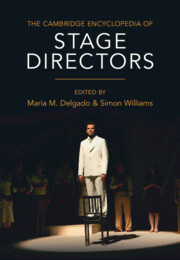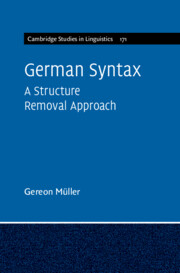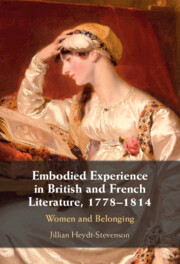Refine search
Actions for selected content:
121 results
7 - Hunger in Urban and Rural Areas, and Children on the Move
-
-
- Book:
- Hunger Redraws the Map
- Published online:
- 01 November 2025
- Print publication:
- 20 November 2025, pp 197-230
-
- Chapter
- Export citation
3 - Organized Anarchy (1966)
-
- Book:
- Waging Peace
- Published online:
- 03 November 2025
- Print publication:
- 13 November 2025, pp 80-118
-
- Chapter
- Export citation
10 - This Is Still a Democracy, Isn’t It? (1973–1975)
-
- Book:
- Waging Peace
- Published online:
- 03 November 2025
- Print publication:
- 13 November 2025, pp 394-407
-
- Chapter
- Export citation
13 - Decision Making Involving Disputes, Negotiation, and Conflict
- from Part III - Applications, Examples, and Selected Topics
-
- Book:
- Making Decisions: Analytics, Cognition, and Application
- Published online:
- 23 October 2025
- Print publication:
- 06 November 2025, pp 183-201
-
- Chapter
- Export citation

Waging Peace
- A History of the Vietnam Antiwar Movement
-
- Published online:
- 03 November 2025
- Print publication:
- 13 November 2025
6 - A Popular Mobilization and Egypt’s Counterrevolution
-
- Book:
- Return of Tyranny
- Published online:
- 17 September 2025
- Print publication:
- 23 October 2025, pp 170-202
-
- Chapter
- Export citation
7 - Features, Case and Agreement
- from Part I - Configuration and Hierarchy
-
- Book:
- Continuing Syntax
- Published online:
- 03 October 2025
- Print publication:
- 25 September 2025, pp 139-156
-
- Chapter
- Export citation
Chapter 1 - Eastern Religious Cults
- from Section 1 - Typology
-
-
- Book:
- A Clinical and Forensic Guide to Cults and Persuasive Leadership
- Published online:
- 19 June 2025
- Print publication:
- 03 July 2025, pp 1-17
-
- Chapter
-
- You have access
- HTML
- Export citation
Using population genetics and parentage analysis to detect intergenerational movement distances of flaxleaf fleabane (Conyza bonariensis)
-
- Journal:
- Weed Science / Volume 73 / Issue 1 / 2025
- Published online by Cambridge University Press:
- 25 June 2025, e51
-
- Article
-
- You have access
- Open access
- HTML
- Export citation

The Cambridge Encyclopedia of Stage Directors
-
- Published online:
- 19 June 2025
- Print publication:
- 03 July 2025
Assessing the use of a mechanical rump pusher in a commercial cattle slaughter plant
-
- Journal:
- Animal Welfare / Volume 34 / 2025
- Published online by Cambridge University Press:
- 11 June 2025, e35
-
- Article
-
- You have access
- Open access
- HTML
- Export citation

Protest and Policy in the Iraq, Nuclear Freeze and Vietnam Peace Movements
-
- Published online:
- 19 May 2025
- Print publication:
- 19 June 2025
-
- Element
- Export citation
3 - Passive
-
- Book:
- German Syntax
- Published online:
- 28 February 2025
- Print publication:
- 06 March 2025, pp 112-172
-
- Chapter
- Export citation
2 - Structure Removal
-
- Book:
- German Syntax
- Published online:
- 28 February 2025
- Print publication:
- 06 March 2025, pp 88-111
-
- Chapter
- Export citation

German Syntax
- A Structure Removal Approach
-
- Published online:
- 28 February 2025
- Print publication:
- 06 March 2025
5 - Station Rhythm Enskilment
-
- Book:
- Bus Station Hustle
- Published online:
- 09 February 2025
- Print publication:
- 13 February 2025, pp 92-113
-
- Chapter
-
- You have access
- Open access
- HTML
- Export citation
Building Small, Living Large: A Corpus of South-Eastern Norwegian Settlement Evidence, 2350–500 bc
-
- Journal:
- European Journal of Archaeology / Volume 28 / Issue 2 / May 2025
- Published online by Cambridge University Press:
- 24 January 2025, pp. 203-226
-
- Article
-
- You have access
- Open access
- HTML
- Export citation
Three-year course of clinical high-risk symptoms for psychosis in the community: a latent class analysis
-
- Journal:
- Epidemiology and Psychiatric Sciences / Volume 34 / 2025
- Published online by Cambridge University Press:
- 13 January 2025, e3
-
- Article
-
- You have access
- Open access
- HTML
- Export citation

Embodied Experience in British and French Literature, 1778–1814
- Women and Belonging
-
- Published online:
- 19 December 2024
- Print publication:
- 02 January 2025
-
- Book
-
- You have access
- Open access
- Export citation
Chapter 8 - Hegel’s Mechanics as a System of Steps from Space and Time to Celestial Motion
- from Part II - Cosmology, Mechanics, and Physics
-
-
- Book:
- Hegel's <i>Philosophy of Nature</i>
- Published online:
- 19 December 2024
- Print publication:
- 12 December 2024, pp 158-175
-
- Chapter
- Export citation
